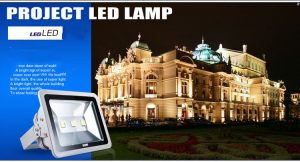 With the rapid development of LED lighting technology in recent years, LED lighting products have gradually been applied in indoor lighting. In the application process, the color quality of LED lighting products has also attracted widespread attention, which has become an important technical bottleneck restricting its further promotion in indoor lighting applications. The definition of white light and color consistency of LED lighting products, as one of the color quality issues of LED lighting products, has become one of the important issues to be considered in the formulation of standards. This article briefly introduces the current international requirements on the chromaticity performance of light sources, and through review and analysis, puts forward a new version of China’s “Architectural Lighting Design Standards” on the definition of semiconductor lighting products white light
With the rapid development of LED lighting technology in recent years, LED lighting products have gradually been applied in indoor lighting. In the application process, the color quality of LED lighting products has also attracted widespread attention, which has become an important technical bottleneck restricting its further promotion in indoor lighting applications. The definition of white light and color consistency of LED lighting products, as one of the color quality issues of LED lighting products, has become one of the important issues to be considered in the formulation of standards. This article briefly introduces the current international requirements on the chromaticity performance of light sources, and through review and analysis, puts forward a new version of China’s “Architectural Lighting Design Standards” on the definition of semiconductor lighting products white light
Introduction
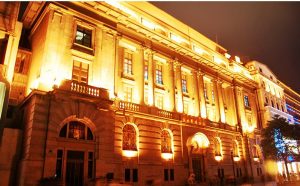 The US Department of Energy has comprehensively forecasted the development trend of LED lamp performance based on the LED chip light efficiency and lifetime. It is estimated that by 2020, the efficiency of warm white LED lamps should reach 170 lm / W, and the ultimate goal is to reach 202 Im / W. Therefore, LED products will gradually increase their market share in lighting. According to the US Department of Energy’s “Energy Saving Potential of Semiconductor Lighting in General Lighting” report, LED lighting products will gradually become mainstream lighting products in indoor lighting applications in 2020. With the rapid development of LED technology in recent years, LED lighting products have been gradually applied in indoor lighting. During the application process, the color quality of LED lighting products has also attracted increasing attention and has become an important technology that restricts its further promotion in indoor lighting applications bottleneck. White light sources are mainly used for lighting in people’s work and life. Therefore, the first two problems that need to be solved in the general lighting field are:
The US Department of Energy has comprehensively forecasted the development trend of LED lamp performance based on the LED chip light efficiency and lifetime. It is estimated that by 2020, the efficiency of warm white LED lamps should reach 170 lm / W, and the ultimate goal is to reach 202 Im / W. Therefore, LED products will gradually increase their market share in lighting. According to the US Department of Energy’s “Energy Saving Potential of Semiconductor Lighting in General Lighting” report, LED lighting products will gradually become mainstream lighting products in indoor lighting applications in 2020. With the rapid development of LED technology in recent years, LED lighting products have been gradually applied in indoor lighting. During the application process, the color quality of LED lighting products has also attracted increasing attention and has become an important technology that restricts its further promotion in indoor lighting applications bottleneck. White light sources are mainly used for lighting in people’s work and life. Therefore, the first two problems that need to be solved in the general lighting field are:
1.a) White light definition and development
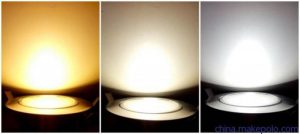 For general lighting, people need a white light source more. In 1998, the white light LED was successfully developed. This LED is made by packaging a GaN chip and yttrium aluminum garnet (YAG). The GaN chip emits blue light (λp = 465nm, Wd = 30nm). The Ce3 + -containing YAG phosphor produced by high-temperature sintering emits yellow light emission after being excited by the blue light, with a peak of 550nm. The blue LED substrate is installed in a bowl-shaped reflection cavity and covered with a thin layer of resin mixed with YAG, about 200-500nm. Part of the blue light emitted by the LED substrate is absorbed by the phosphor, and another part of the blue light is mixed with the yellow light emitted by the phosphor to obtain white light. Now, for InGaN / YAG white LED, by changing the chemical composition of YAG fluorescent powder and adjusting the thickness of the phosphor layer, white light of each color with a color temperature of 3500-10000K can be obtained.
For general lighting, people need a white light source more. In 1998, the white light LED was successfully developed. This LED is made by packaging a GaN chip and yttrium aluminum garnet (YAG). The GaN chip emits blue light (λp = 465nm, Wd = 30nm). The Ce3 + -containing YAG phosphor produced by high-temperature sintering emits yellow light emission after being excited by the blue light, with a peak of 550nm. The blue LED substrate is installed in a bowl-shaped reflection cavity and covered with a thin layer of resin mixed with YAG, about 200-500nm. Part of the blue light emitted by the LED substrate is absorbed by the phosphor, and another part of the blue light is mixed with the yellow light emitted by the phosphor to obtain white light. Now, for InGaN / YAG white LED, by changing the chemical composition of YAG fluorescent powder and adjusting the thickness of the phosphor layer, white light of each color with a color temperature of 3500-10000K can be obtained.
2.b) Light source / light color
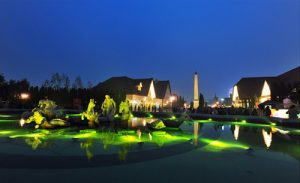 As the important aspect of evaluating the quality of LED products, the light color consistency has attracted more and more attention. However, the sampling results of the regulatory authorities are not ideal. This article analyzes the main factors that affect the consistency of LED light color and the existing operating methods. More importantly, it proposes an intelligent online full inspection solution that can fundamentally solve the problem of LED light color non-cause and cover the entire industry chain. Compared with traditional methods, this technology has the advantages of high efficiency, accuracy, and low cost.
As the important aspect of evaluating the quality of LED products, the light color consistency has attracted more and more attention. However, the sampling results of the regulatory authorities are not ideal. This article analyzes the main factors that affect the consistency of LED light color and the existing operating methods. More importantly, it proposes an intelligent online full inspection solution that can fundamentally solve the problem of LED light color non-cause and cover the entire industry chain. Compared with traditional methods, this technology has the advantages of high efficiency, accuracy, and low cost.
The light color consistency of LED includes two aspects:
One refers to the uniformity of the spatial light color distribution of the LED product itself, that is, the uniformity of the spatial color can be evaluated by the unevenness of the chromaticity spectrum; the second refers to the light color between the individual LED. Consistency is generally expressed by color tolerance, both of which will directly affect people’s visual perception and need to be strictly controlled. With the continuous development of LED, consumers have higher and higher requirements for the light color quality of LED, especially in indoor lighting. As the important basis for evaluating the light color quality of LED lamps, more attention has been paid . At present, the international and domestic standards have given clear requirements for the light color consistency of LED products. However, the quality of LED in the market is not optimistic. The news of unqualified spot inspections is frequently exposed. The qualified rate of spot inspection lamps is less than 50%. The color of LED is the key factor that affects the qualification rate.
The main factors affecting light color
2.1 Characteristics of LED itself
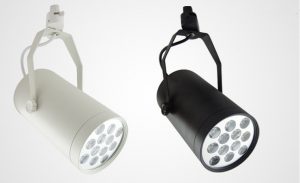 The LED industry chain is relatively long. From upstream material epitaxy and chip manufacturing to midstream packaging to downstream application products, each step of the material or manufacturing process will affect the final light color. It is difficult for companies to control all key processes. . At the same time, there are many types of LED products and they are updated quickly, such as LED bulbs, spotlights, PAR lights, panel lights, simple lights, etc. Each new product put into production will experience a period of unstable quality, changes in raw materials, process changes, and governance. Changes, etc., making its quality control more difficult. For LED packaging, in the process of achieving white light, a phosphor adhesive layer is required to convert the color and energy of the light emitted by the chip. The phosphor coating process determines the quality of the white LED light color to a certain extent. The uneven coating or irregular shape will result in localized yellowing or bluishness of the emitted light, coupled with the transmission or scattering of its packaging shell, the unevenness of the white light color will be more obvious. At the same time, heat dissipation will also affect the light color of LED, especially for high-power LED, the accumulation of chip heat will directly reduce the LED’s luminous flux and life and color drift. In order to ensure the light color quality of an application product composed of multiple LED chips, not only is it necessary to have a good light color consistency between the LED devices used, but also to ensure that each heat dissipation condition is approximately the same. In addition, color drift is also a problem that must be paid attention to in the control of light color, especially in the early stage of product operation, the degree of drift is often different, resulting in light color differences that can be detected by the naked eye between LED products.
The LED industry chain is relatively long. From upstream material epitaxy and chip manufacturing to midstream packaging to downstream application products, each step of the material or manufacturing process will affect the final light color. It is difficult for companies to control all key processes. . At the same time, there are many types of LED products and they are updated quickly, such as LED bulbs, spotlights, PAR lights, panel lights, simple lights, etc. Each new product put into production will experience a period of unstable quality, changes in raw materials, process changes, and governance. Changes, etc., making its quality control more difficult. For LED packaging, in the process of achieving white light, a phosphor adhesive layer is required to convert the color and energy of the light emitted by the chip. The phosphor coating process determines the quality of the white LED light color to a certain extent. The uneven coating or irregular shape will result in localized yellowing or bluishness of the emitted light, coupled with the transmission or scattering of its packaging shell, the unevenness of the white light color will be more obvious. At the same time, heat dissipation will also affect the light color of LED, especially for high-power LED, the accumulation of chip heat will directly reduce the LED’s luminous flux and life and color drift. In order to ensure the light color quality of an application product composed of multiple LED chips, not only is it necessary to have a good light color consistency between the LED devices used, but also to ensure that each heat dissipation condition is approximately the same. In addition, color drift is also a problem that must be paid attention to in the control of light color, especially in the early stage of product operation, the degree of drift is often different, resulting in light color differences that can be detected by the naked eye between LED products.
2.2 Different contexts between LED packaging and LED products
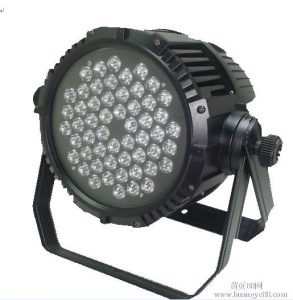 For the color division of LED, LED packaging and LED products adopt different standards. LED packaging is usually divided into bins according to the American standard ANSI quadrilateral area, as shown in Figure 1. For LED products, China and the European Union standards use Mai Liang Adam ellipse indicates color tolerance, such as: EU regulation 12020220 requires 6 steps for color tolerance. McAdam Smooth: China’s G2008-20 “Performance requirements for self-ballasted B lamps for general photos” (5) on color tolerance The requirement is less than 750 and some special occasions require smaller color tolerance.
For the color division of LED, LED packaging and LED products adopt different standards. LED packaging is usually divided into bins according to the American standard ANSI quadrilateral area, as shown in Figure 1. For LED products, China and the European Union standards use Mai Liang Adam ellipse indicates color tolerance, such as: EU regulation 12020220 requires 6 steps for color tolerance. McAdam Smooth: China’s G2008-20 “Performance requirements for self-ballasted B lamps for general photos” (5) on color tolerance The requirement is less than 750 and some special occasions require smaller color tolerance.
Therefore, it is difficult to use a quad-bin-packed LED to directly nucleate the core to be used for product production and control. There is a large difference in the context of LED in the middle and lower reaches of the LED, which causes great disadvantages to the control of light and color consistency of LED products.
3.1 LED package supply control
The LED packaging industry belongs to the middle link of the LED industry chain, and plays a role in connecting the advanced technology and practical application of LED. The packaging manufacturers themselves will separate and color the LED, and the color division is often based on the eight quadrilateral areas of ANSI. After the downstream manufacturers purchase packaged LED, they will also use quality inspection laboratory equipment such as spectrometer integrating sphere system and distributed photometer system to spot check raw materials to ensure their light color quality. However, the number of spot inspections is limited after all and cannot guarantee all The uniformity of the packaged LED colors also brings challenges to the subsequent production and control of LED products. In order to improve the light-color consistency of LED products, downstream manufacturers need to strictly control the quality of LED packages, and often have to define smaller color sub-regions. For example, each quadrilateral region is further refined to 16 small quads. In order to realize that each-one LED package in the sub-region has a smaller color difference. However, although this method is effective, it will directly lead to a substantial increase in costs.
3.2 Measurement and control of LED products
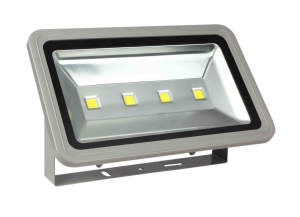 For the light color detection and control of LED products, laboratory sampling is mostly adopted. In laboratory testing, a spectrometer integrating sphere system is often used to measure the total luminous flux and chromaticity value of the LED. If the spatial light intensity distribution and spatial color distribution of the LED need to be obtained, the distributed spectror adiometer system is used for measurement. However, the PN junction heats up obviously when the LED is lit, and the light radiation output is very sensitive to temperature. Even if the junction temperature rises slightly, the luminous flux attenuation is large, and the color will drift. Transient test data and steady-state data are often quite different, and often even exceed 10%. The differences between lamps of different specifications are not the same, there is no rule to follow, so the results of transient measurements cannot directly reflect the actual LED lights. Performance in working condition. Therefore, the measurement results of the LED lamp must be preheated and stabilized before it can be more instructive, so the detection time is also increased. In the laboratory, LED products are one-of-a-kind inspection. Although the measurement accuracy is high, it takes a long time and costs. For a large number of LED produced by manufacturers, only a certain percentage of the products can be extracted for inspection, and the full quality inspection of LED cannot be achieved. , Still can not fully control the quality of the LED.
For the light color detection and control of LED products, laboratory sampling is mostly adopted. In laboratory testing, a spectrometer integrating sphere system is often used to measure the total luminous flux and chromaticity value of the LED. If the spatial light intensity distribution and spatial color distribution of the LED need to be obtained, the distributed spectror adiometer system is used for measurement. However, the PN junction heats up obviously when the LED is lit, and the light radiation output is very sensitive to temperature. Even if the junction temperature rises slightly, the luminous flux attenuation is large, and the color will drift. Transient test data and steady-state data are often quite different, and often even exceed 10%. The differences between lamps of different specifications are not the same, there is no rule to follow, so the results of transient measurements cannot directly reflect the actual LED lights. Performance in working condition. Therefore, the measurement results of the LED lamp must be preheated and stabilized before it can be more instructive, so the detection time is also increased. In the laboratory, LED products are one-of-a-kind inspection. Although the measurement accuracy is high, it takes a long time and costs. For a large number of LED produced by manufacturers, only a certain percentage of the products can be extracted for inspection, and the full quality inspection of LED cannot be achieved. , Still can not fully control the quality of the LED.
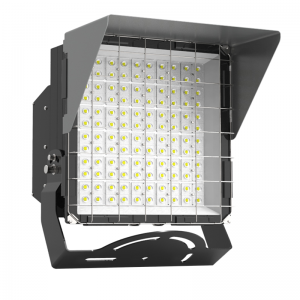 The large color difference between the same light sources will inevitably affect the quality of the visual environment. For example, the consistency of light color between the light sources of metal halide lamps in traditional light sources has a large gap compared to fluorescent lamps, which has caused metal halide lamps to be limited in indoor lighting applications. Similar to metal halide lamps, there are more obvious color differences between white semiconductor light sources. According to research by the American Lighting Research Center (LRC), the color difference between many semiconductor lighting sources is even more than 12 times. Such a huge color difference obviously affects the application of LED lighting products in indoor lighting. Therefore, LED lighting products. In indoor lighting applications, how to define white LEDand evaluate the color consistency between their light sources has become an important issue in the current standard formulation.
The large color difference between the same light sources will inevitably affect the quality of the visual environment. For example, the consistency of light color between the light sources of metal halide lamps in traditional light sources has a large gap compared to fluorescent lamps, which has caused metal halide lamps to be limited in indoor lighting applications. Similar to metal halide lamps, there are more obvious color differences between white semiconductor light sources. According to research by the American Lighting Research Center (LRC), the color difference between many semiconductor lighting sources is even more than 12 times. Such a huge color difference obviously affects the application of LED lighting products in indoor lighting. Therefore, LED lighting products. In indoor lighting applications, how to define white LEDand evaluate the color consistency between their light sources has become an important issue in the current standard formulation.
Lighting source-the significance of white LED to life
Lighting requirements for light sources
Human production, work, study, life and other indispensable important conditions-a lighting source must meet the international green lighting standards proposed in 1992, that is, on the basis of ensuring the quality of lighting, pay attention to saving lighting electricity and reducing The exhaust gas emissions and floating dust are generated to achieve the goal of environmental protection. In 1996, China began to implement the national plan for green lighting, advocated scientific lighting design, adopted high-efficiency, long-life, highly reliable and safe lighting electrical products, improved work, study, living conditions and quality, and created a high-quality, efficient, safe, comfortable, Economical, energy saving, healthy and environmentally friendly lighting environment.
 People’s visual perception of light at different wavelengths and their intensity depends on two factors, subjective and objective. Under certain conditions, the brightness of the surrounding environment and the reflection performance of different objects on light play an important role. The purpose of the illumination light source is to objectively display the lightness, darkness, and color of an object. To obtain the real effect of direct observation of external scenery by the human eye, it must have good light color characteristics. That is to say, at the same time as requiring high luminous efficiency and sufficient brightness, there should also be a color temperature close to natural light and a high color rendering index. Lighting quality, can most effectively use electrical energy to reduce energy loss in lighting devices. Based on the design of the lighting system, the illuminated place should have a suitable spatial distribution of brightness to obtain uniformity of illumination and the best visual effects. Follow the optics The biological effect law of different wavelengths of light (color) has an important impact on the development and growth of organisms: people visually reflect different colors and have different psychological feelings. Usually, short-wavelength purple light can produce a mysterious and transparent feeling; blue light has Helps to eliminate emotional tension, makes people feel elegant and peaceful. Human eyes are particularly sensitive to green light, reminiscent of green mountains and trees, help digestion and keep calm. Therefore, the hospital walls are painted more yellow-green. Red light energy Stimulate the optic nerve to create a warm, joyful, festive and auspicious atmosphere; yellow light is conducive to creating a warm and gorgeous environment. According to the On the same occasion, a variety of environmental requirements choose a power-saving and efficient light source, supplemented by various optical configurations, lamp shapes, electrical control, and adjustment of the distance and angle of light to obtain comfortable illumination and reasonable spatial distribution.
People’s visual perception of light at different wavelengths and their intensity depends on two factors, subjective and objective. Under certain conditions, the brightness of the surrounding environment and the reflection performance of different objects on light play an important role. The purpose of the illumination light source is to objectively display the lightness, darkness, and color of an object. To obtain the real effect of direct observation of external scenery by the human eye, it must have good light color characteristics. That is to say, at the same time as requiring high luminous efficiency and sufficient brightness, there should also be a color temperature close to natural light and a high color rendering index. Lighting quality, can most effectively use electrical energy to reduce energy loss in lighting devices. Based on the design of the lighting system, the illuminated place should have a suitable spatial distribution of brightness to obtain uniformity of illumination and the best visual effects. Follow the optics The biological effect law of different wavelengths of light (color) has an important impact on the development and growth of organisms: people visually reflect different colors and have different psychological feelings. Usually, short-wavelength purple light can produce a mysterious and transparent feeling; blue light has Helps to eliminate emotional tension, makes people feel elegant and peaceful. Human eyes are particularly sensitive to green light, reminiscent of green mountains and trees, help digestion and keep calm. Therefore, the hospital walls are painted more yellow-green. Red light energy Stimulate the optic nerve to create a warm, joyful, festive and auspicious atmosphere; yellow light is conducive to creating a warm and gorgeous environment. According to the On the same occasion, a variety of environmental requirements choose a power-saving and efficient light source, supplemented by various optical configurations, lamp shapes, electrical control, and adjustment of the distance and angle of light to obtain comfortable illumination and reasonable spatial distribution.
Reform and Development in Lighting
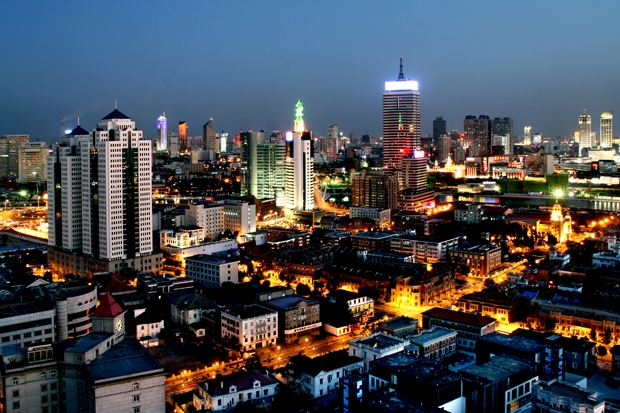 The development of lighting sources closely related to people’s activities and technological progress have become an important symbol in the course of the history of human civilization. The light source technology and lighting system reflect the urban or regional economic prosperity and social construction modernization level from one side. Aiming to achieve efficient, comfortable, safe, economical, environmentally friendly and healthy green lighting, it is of great practical significance to strengthen technical research and vigorously develop a new generation of green light sources. The technology surrounding the lighting source involves the interdisciplinary aspects of new material research, optical structure design, electronic circuits, lamp modeling, artistic landscape, and visual effects. Since the invention of the incandescent lamp in the nineteenth century, the light source has undergone more than 100 years of change. In the twentieth century, various fluorescent lamps and high-pressure discharge lamps (HID) were introduced. Until the rise of the new solid-state light source of light-emitting diodes (LEDs), the field of lighting presents different colors. , Colorful world. The emergence of new energy-saving and environmentally-friendly solid-state light sources represented by LEDhas attracted great attention from people in the industry and abroad, and has been highly valued by developed countries such as the United States, Japan, and the United States, as well as South Korea and Taiwan. Vigorous investment in competitive development will trigger a revolution in the lighting field.
The development of lighting sources closely related to people’s activities and technological progress have become an important symbol in the course of the history of human civilization. The light source technology and lighting system reflect the urban or regional economic prosperity and social construction modernization level from one side. Aiming to achieve efficient, comfortable, safe, economical, environmentally friendly and healthy green lighting, it is of great practical significance to strengthen technical research and vigorously develop a new generation of green light sources. The technology surrounding the lighting source involves the interdisciplinary aspects of new material research, optical structure design, electronic circuits, lamp modeling, artistic landscape, and visual effects. Since the invention of the incandescent lamp in the nineteenth century, the light source has undergone more than 100 years of change. In the twentieth century, various fluorescent lamps and high-pressure discharge lamps (HID) were introduced. Until the rise of the new solid-state light source of light-emitting diodes (LEDs), the field of lighting presents different colors. , Colorful world. The emergence of new energy-saving and environmentally-friendly solid-state light sources represented by LEDhas attracted great attention from people in the industry and abroad, and has been highly valued by developed countries such as the United States, Japan, and the United States, as well as South Korea and Taiwan. Vigorous investment in competitive development will trigger a revolution in the lighting field.





